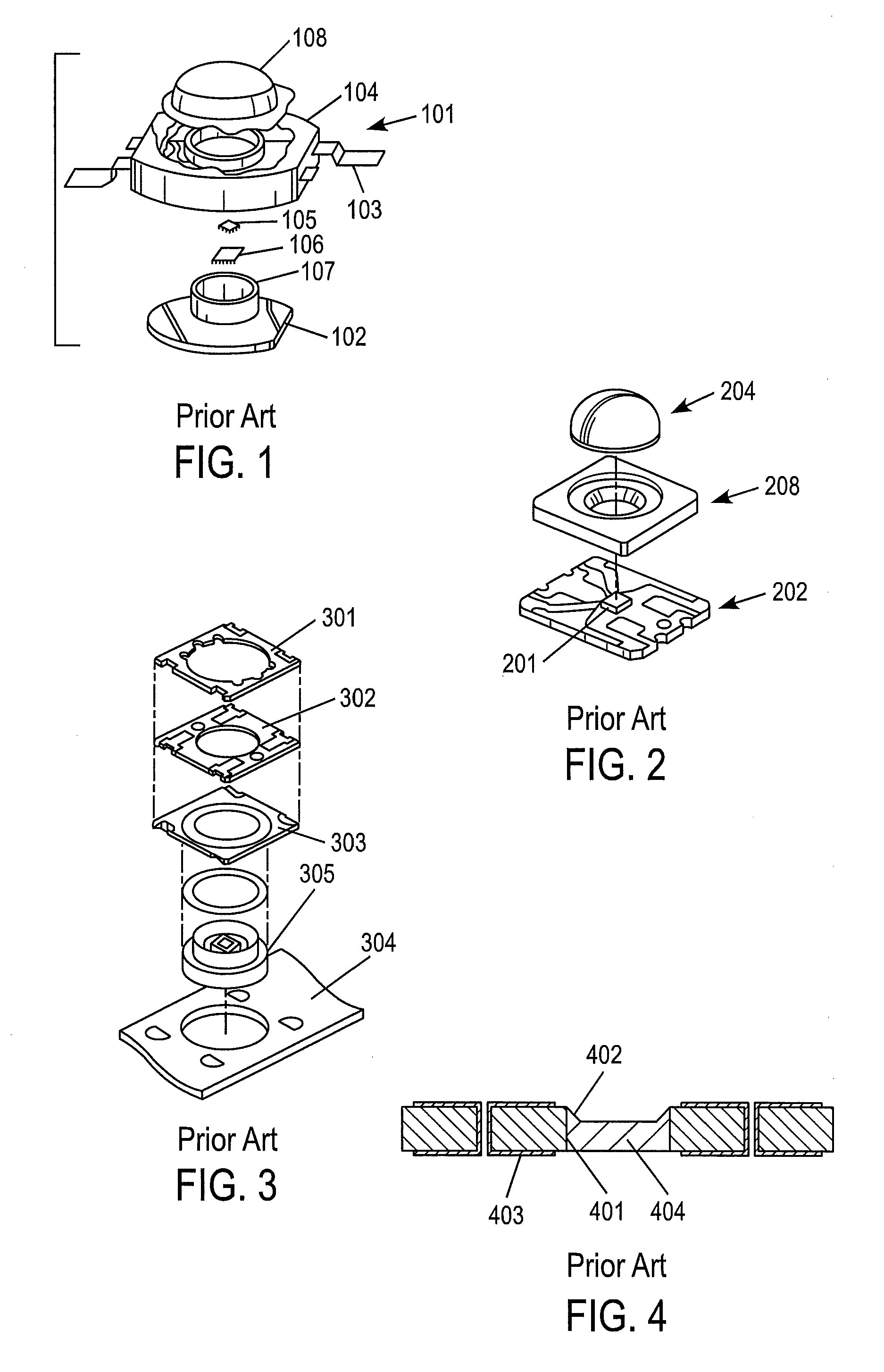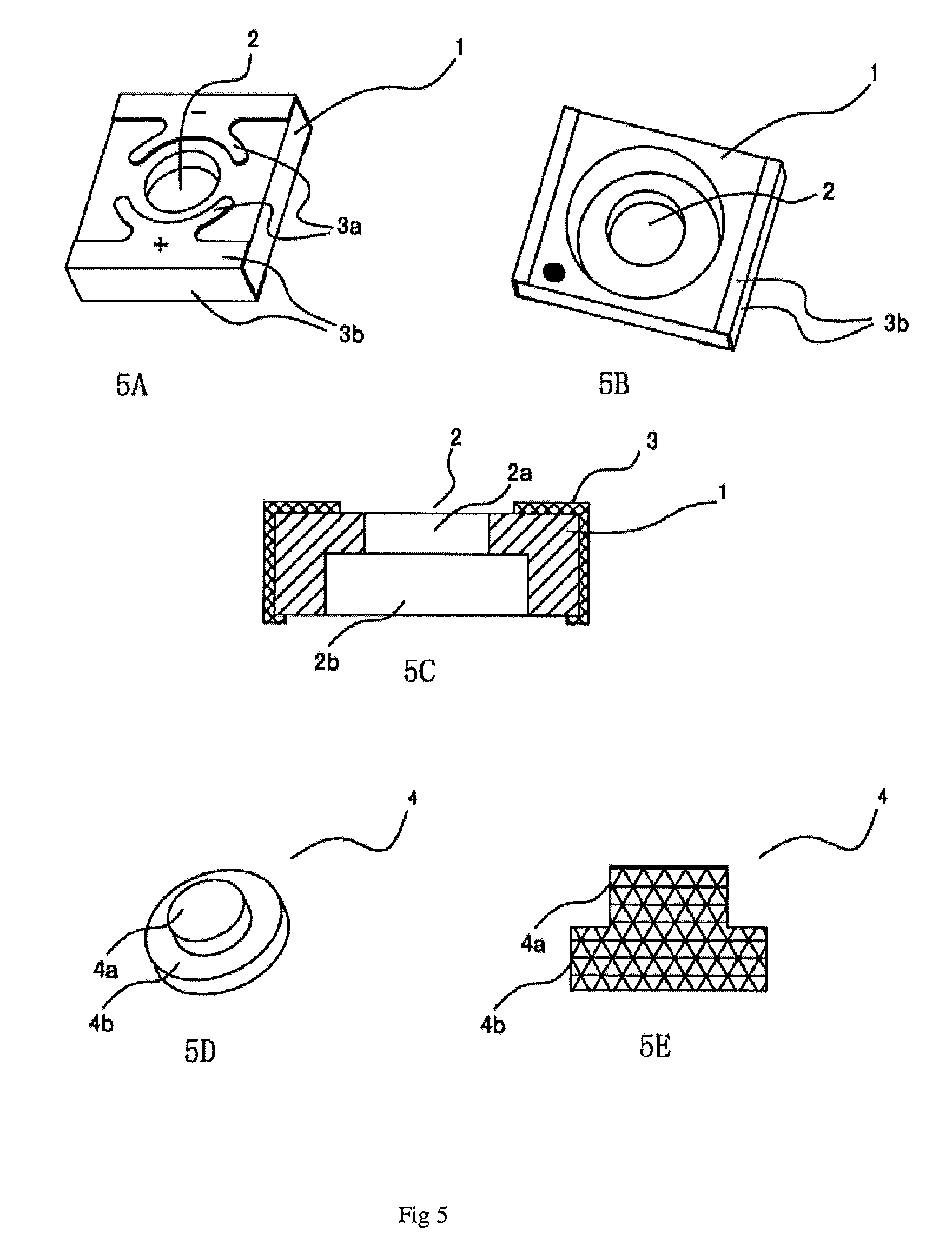Structure of heat dissipation substrate for power light emitting diode (LED) and a device using same
a technology of light-emitting diodes and heat-emitting substrates, which is applied in the direction of electrical apparatus construction details, semiconductor/solid-state device details, lighting and heating apparatus, etc., can solve the problems of short life, unstable product performance, and devices with power limited to milliwatts, and achieve low manufacturing efficiency, poor product consistency, and low feasibility
- Summary
- Abstract
- Description
- Claims
- Application Information
AI Technical Summary
Benefits of technology
Problems solved by technology
Method used
Image
Examples
embodiment 1
[0029]Referring to FIG. 5 and FIG. 6, a preferred embodiment 1 of the heat dissipation substrate used for manufacturing power LED will be described. In this embodiment, FIG. 5 and FIG. 6 show a basic schematic diagram of a circuit board 1 and a heat sink 4 forming a heat dissipation substrate. FIG. 5A illustrates the upper surface of the heat dissipation substrate, FIG. 5B illustrates the lower surface of the heat dissipation substrate, FIG. 5C shows a sectional view of the heat dissipation substrate with the heat sink 4 embedded in the counterbore 2, and FIGS. 5D and 5E respectively show a cubic chart and a sectional view of the heat sink. In the embodiment, the circuit board 1 has a one-piece structure, on which a counterbore 2 and metal lines 3 are placed, wherein the metal lines 3 act as electrodes of the device, and include internal wire connection parts 3a and external electrodes 3b. The counterbore includes two holes, through hole 2a and blind hole 2b, communicating with each...
embodiment 2
[0032]According to FIG. 9, FIG. 10 and FIG. 11, a heat dissipation substrate of a preferred embodiment 2 of the invention used for manufacturing a power LED is shown and will be described as blow.
[0033]FIG. 9 shows a heat dissipation substrate having a plurality of counterbores, with the heat dissipation substrate of the previous embodiment acting as its basic element. The heat dissipation substrate has a one-piece circuitboard, on or in which position lines for cutting 5, slots 6 and / or holes 7 (not shown) are placed; an array, M column×N row, of counterbores is placed in the circuit board, wherein M and N are integers greater than or equal to 1, and M and N can not be equal to 1 simultaneously. There are a plurality of position lines for cutting 5, each corresponding to either end of each counterbore column and / or row; there are a plurality of slots 6 and / or holes 7, which are placed at the side of each counterbore column and / or row (as shown in FIG. 10, there is of a hole 7 set a...
PUM
 Login to View More
Login to View More Abstract
Description
Claims
Application Information
 Login to View More
Login to View More - R&D
- Intellectual Property
- Life Sciences
- Materials
- Tech Scout
- Unparalleled Data Quality
- Higher Quality Content
- 60% Fewer Hallucinations
Browse by: Latest US Patents, China's latest patents, Technical Efficacy Thesaurus, Application Domain, Technology Topic, Popular Technical Reports.
© 2025 PatSnap. All rights reserved.Legal|Privacy policy|Modern Slavery Act Transparency Statement|Sitemap|About US| Contact US: help@patsnap.com



